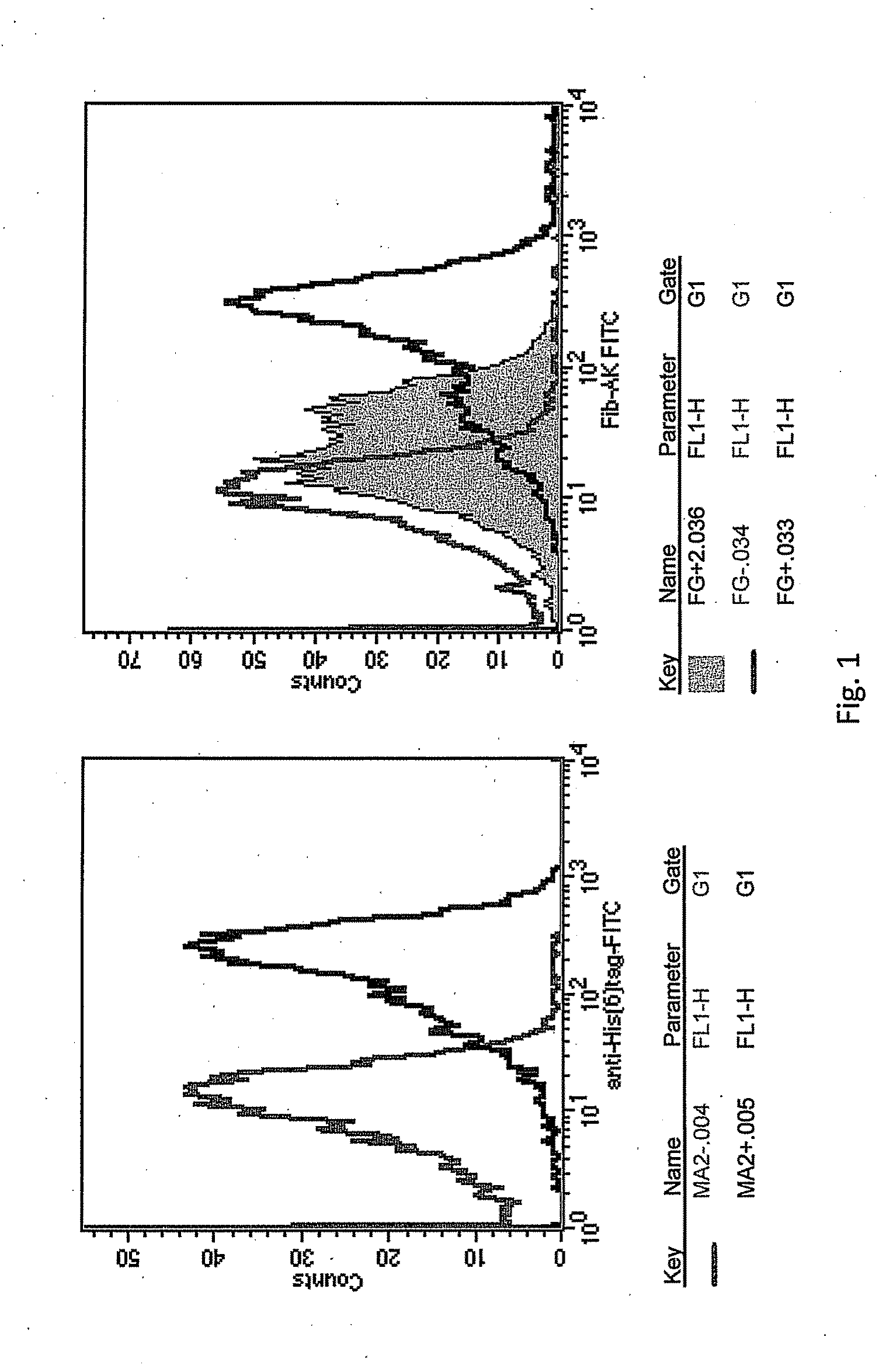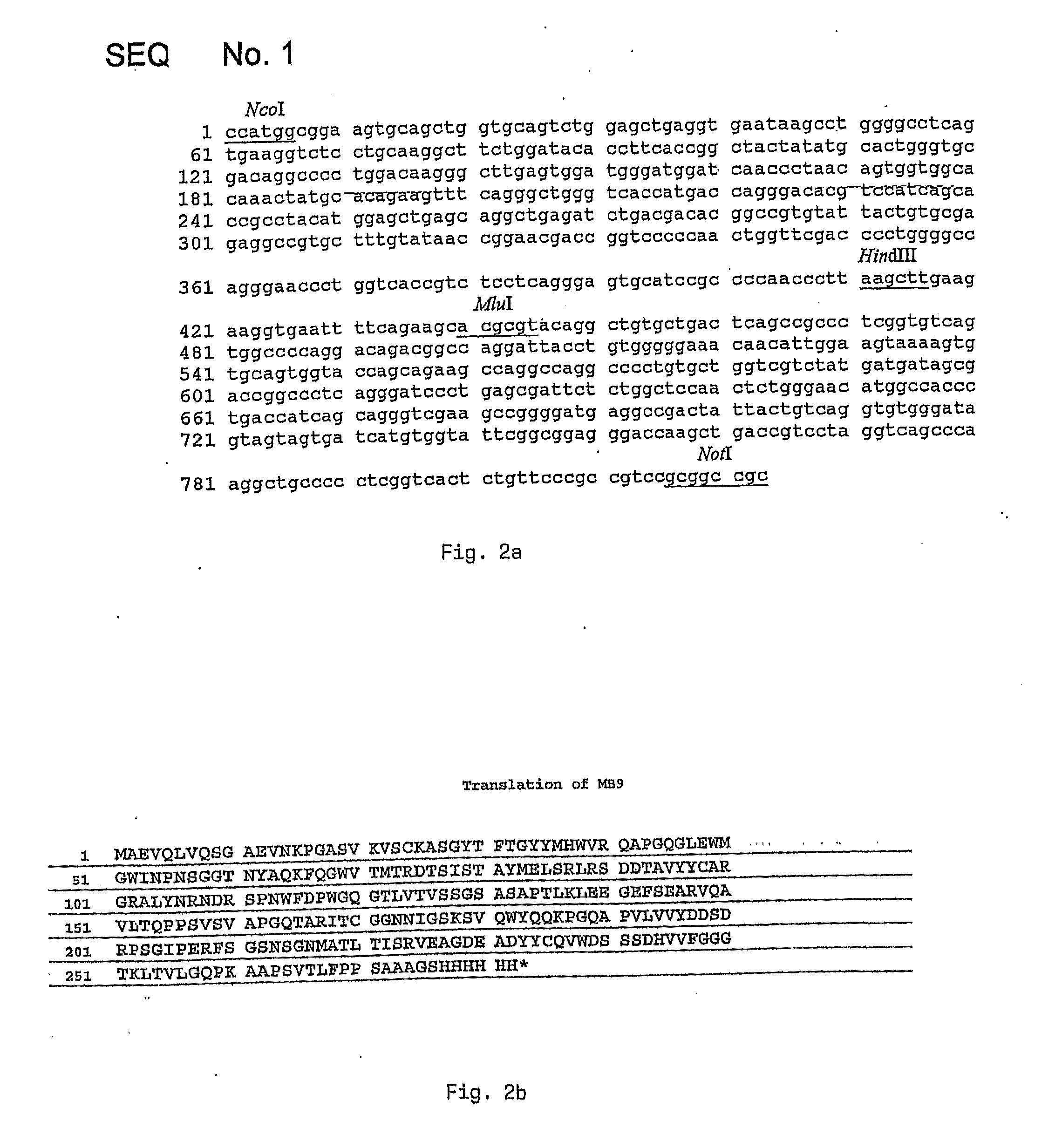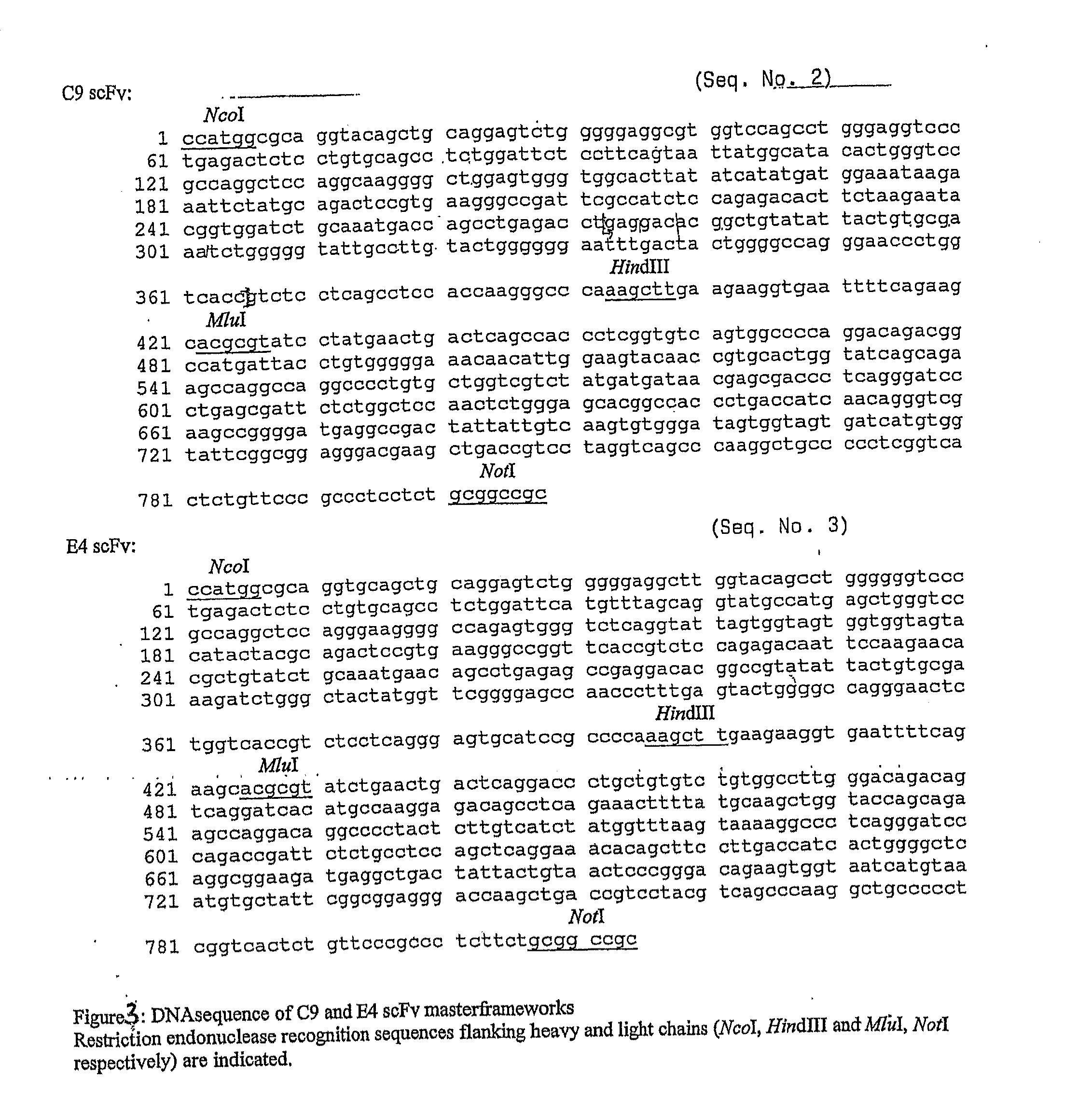Antibody of human origin for inhibiting thrombocytes aggregation
a technology of thrombocytopenia and antigen, which is applied in the field of antigen for inhibiting platelet aggregation, can solve the problems of increasing the prevalence of severe thrombocytopenia, the cost of therapy is considerably high, and the affinity of the receptor for its ligands is very low
- Summary
- Abstract
- Description
- Claims
- Application Information
AI Technical Summary
Benefits of technology
Problems solved by technology
Method used
Image
Examples
example 1
Production of the Human scFv Antibody Fragment MB9
[0086]RNA and cDNA Preparation
[0087]Total RNA is isolated from spleen samples of six human donors and peripheral blood lymphocytes (PBL) of five healthy human donors (app. 1-5×108 PBLs each, RNeasy™ Midiprep.Kit, Qiagen). From total RNA poly A+-RNA is prepared (Oligotex mRNA Kit, Qiagen) and used for cDNA synthesis (SuperScript™ Preamplifications System, Gibco BRL / LIFE Technologies).
Amplification of Human Ig Variable Regions
[0088]Oligonucleotides used in PCR for amplification of variable regions of human immunoglobulin heavy and light chains those of FIG. 8. Heavy chains are amplified using a single IgM specific constant primer and one of a number of different primers (VH-1 to VH-7) specific for the variable region in separate PCR reactions. Accordingly lambda and kappa light chains are amplified using a single lambda or kappa specific constant primer and one out of a number of different variable primers (Vλ-1 to Vλ10 and Vκ-1 to 6)....
example 2
Production of the Synthetic Human Framework Based scFv Antibody Fragment
[0115]Origin of Human scFv Master Frameworks
[0116]For the generation of a synthetic library by randomization of the CDR3 region of the heavy chain two human master frameworks (C9 and E4, FIG. 3) are chosen because of their excellent production characteristics in E. coli cells. Both scFv's originate from a large human phage display antibody library (Little, M., et al., J. Immunol. Methods 1999, 231: 3-9) and specific for hepatitis B virus antigen (C9) and estradiol (E4) respectively.
Vector Construction for the Synthetic scFv Library
[0117]C9 and E4 scFv's are cloned in pEXHAM1 vector DNA replacing the stuffer scFv by standard recombinant cloning techniques using NcoI and NotI cloning sites.
[0118]To prepare a vector allowing the randomization of CDR3 of the heavy chain without changes of the original sequence this region is replaced by a stuffer DNA fragment containing restriction enzyme recognition sites of the ty...
example 3
Improvement of GPIIb / IIIa Specific Synthetic scFv Fragments by Light Chain Shuffling
Vector Construction:
[0130]CDR3 sequences of the variable domain of the light chain of C9 and E4 scFv in pEXHAM1 were replaced by a synthetic stuffer introducing flanking BbsI restriction sites as outlined in FIG. 16. Standard PCR reactions were set up using the oligonucleotides shown in FIG. 17 to amplify the DNA-Fragments of the scFv regions in 3′ and 5′ direction of the light chain CDR3. PCR-fragments were purified cleaved with BbsI. The stuffer CDR3 fragment was generated directly by hybridisation of the indicated oligos. All three fragments were ligated with BbsI digested pEXHAM1 vector-DNA to generate pEXHAM9 / C9 and pEXHAM9 / E4 respectively. To remove additional BbsI sites the light chain fragments of pEXHAM9 / C9 and pEXHAM9 / E4 were recloned in pEXHAM6 / C9 and pEXHAM6 / E4 using MluI and NotI sites to generate pEXHAM10 / C9 and pEXHAM10 / E4. To facilitate the cloning of randomized VLCDR3 sequences, a 1....
PUM
| Property | Measurement | Unit |
|---|---|---|
| concentration | aaaaa | aaaaa |
| concentration | aaaaa | aaaaa |
| concentrations | aaaaa | aaaaa |
Abstract
Description
Claims
Application Information
 Login to View More
Login to View More - R&D
- Intellectual Property
- Life Sciences
- Materials
- Tech Scout
- Unparalleled Data Quality
- Higher Quality Content
- 60% Fewer Hallucinations
Browse by: Latest US Patents, China's latest patents, Technical Efficacy Thesaurus, Application Domain, Technology Topic, Popular Technical Reports.
© 2025 PatSnap. All rights reserved.Legal|Privacy policy|Modern Slavery Act Transparency Statement|Sitemap|About US| Contact US: help@patsnap.com



